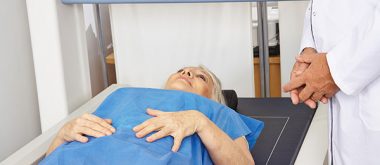Bone health can become of great concern in the aging population. Running is actually one of the best weight-bearing exercises that you can do to help improve your bones.
As much of the world deals with the health issues caused by obesity nowadays, it is hard to miss the message about the importance of regular exercise. The common recommendation is that people should get 30 minutes of exercise every day. Yet different exercises help the body in different ways: Yoga can help with strength, flexibility and balance. Weight-lifting prevents loss of strength over time.
Aging and Bone Health
As you age, your bones change in two major ways. First, there is a loss of bone density. As with most of the cells in your body, bone tissue is continuously being replaced. Over time, the body is not able to keep up with the bone loss, leading to bones that are not as strong or supportive as when you were younger. Especially for post-menopausal women, the continual loss of bone density can turn into the brittle bones of osteoporosis.
The second change is the conversion of red bone marrow into yellow bone marrow. Red bone marrow is responsible for producing red and white blood cells. Yellow bone marrow, on the other hand, produces some white blood cells but is mostly fatty tissue. The loss of red marrow reduces the availability of red blood cells, which can have an impact throughout the body.
The Benefits of Exercise for Your Bones
Your skeletal system is made to endure some stress. In fact, your bones are able to adapt to extra strain. By taking part in regular exercise, especially weight-bearing exercises that work against gravity, your bones will naturally strengthen as they deal with the additional stress. On the other hand, a sedentary lifestyle encourages bone loss. If the bones are never challenged, they will stay at their current density or even lose density. Exercises such as walking or jogging are especially good for building bone density.
Running and Your Bones

The benefits are not all found in running long distances. According to a study published by the Journal of Epidemiology, bone density in women can be significantly improved with short, high-intensity runs of one to two minutes a day. In some cases, that short amount of added stress is enough to give a 4 percent improvement in bone density.
Staying Healthy on the Run
While this research might encourage you to go out for a run, it is necessary to take precaution. Before getting involved in any exercise program, you should consult a physician, especially if you have had heart problems in the past. Also, if you have already experienced issues due to bone loss, you should consult a medical professional. This exercise puts repetitive stress on the body that can aggravate pre-existing conditions. A little soreness after a good run is normal. Sharp pains are telling you to stop.
Finally, take some time to learn about the sport. There are many informative videos available online, from coaches discussing form to experts advising on techniques and strategies for the new runner. Also, you should let a professional fit you for a decent pair of supportive running sneakers. Good equipment will help prevent injuries. Then get out and take that first run. Your bones will thank you.





